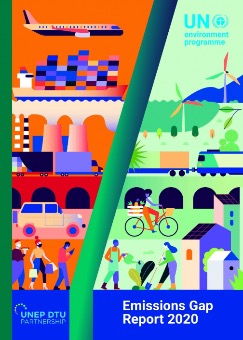
The UNEP Emissions Gap Report 2020 has been released. The idea behind this document is to provide a review of the difference between where greenhouse emissions are predicted to be in 2030 and where they should be to avoid the worst impacts of climate change.
In a 2020 report, scientists concluded that despite temporary reductions in emissions during the pandemic, we are still inexorably moving towards a temperature rise of more than 3 ° C, well above the Paris Agreement target of limiting global warming to 1. 5-2 ° C.
Due to the global coronavirus pandemic and the imposed restrictive measures, CO2 emissions can indeed be reduced by 7 percent compared to 2019 levels. However, in the long-term perspective, such short-term reductions would only lead to a 0.01 ° C decrease in global warming by 2050.
However, a green recovery from the pandemic could, in turn, help reduce projected emissions by 25 percent by 2030. To achieve this, governments, especially the G20 countries, which account for 80 percent of global greenhouse gas emissions, must invest substantial resources in climate change adaptation.
“However, UNEP’s Emissions Gap report shows that a green pandemic recovery can take a huge slice out of greenhouse gas emissions and help slow climate change. I urge governments to back a green recovery in the next stage of COVID-19 fiscal interventions and raise significantly their climate ambitions in 2021,” Inger Andersen, UNEP’s Executive Director.
In other words, according to the authors of the report, the COVID-19 crisis has clearly demonstrated that the actions of governments can significantly contribute to changing the behavioural mechanisms of the population. That is why the process of recovering from the consequences of the global pandemic is our chance to abandon outdated habits and take a step towards a new low-carbon lifestyle.
For more details on the report in Russian, please follow the link.